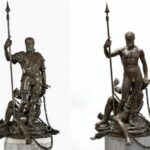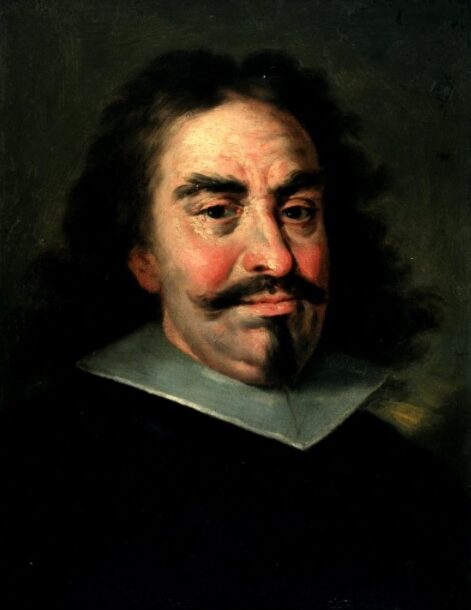
In 1549 Charles V commissioned Leone Leoni to create a group of sculptures of himself and Isabella of Portugal (who had died years earlier). The work presented was Leoni’s first monumental sculpture, which, in his own words, was to bring him fame. The artist consulted Granvela from Milan to obtain permission from the emperor to enlarge the sculpture with the figure of the Furar, which for the sculptor he called a capriccio. It is clear from the letter that the Furar was to replace the representation of the emperor’s victories or a subdued province. In June, he was consulted again for a new capriccio: to give the sculpture a suit of armour that could be put on or taken off at will, combining two traditions: the Hellenistic armed portrait adopted in Rome and the nude reserved for the gods and emperors. Leoni received the relevant authorisations. In 1556 the sculpture, together with other portraits, was presented to Charles V in Brussels, although it was not completed until 1564 in Madrid. Leoni conceived the figure of the emperor alone and naked, then the fury and finally the armour, after a stay in Augsburg between January and March 1551.
Collection: Images
Project: 5. Power and powers in the history of Europe: oligarchies, political participation and democracy., 6. Under a cloak of terror: violence and armed conflict in Europe.
Chronology: XVI
Scope: Secondary education, Baccalaureate, University
Resource type: Image
Format: Cast bronze (251 x 143 x 130 cm)
Source: Museo del Prado (Madrid)
Language: Spanish
Date: 1551-1555
Owner: Álvaro Romero González (Modernalia)
Identifier: E000273
Copyright: Museo del Prado (Madrid)
Abstract: Bronze sculpture made by the Leone family with Charles V as the main character, portrayed in divine style, with the possibility of removing his armour at will
Image
Tags






